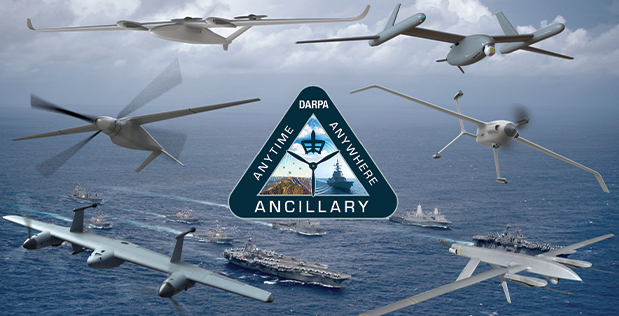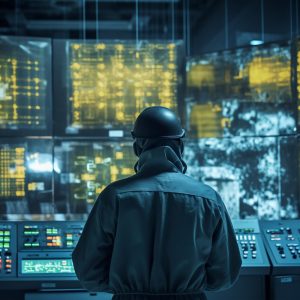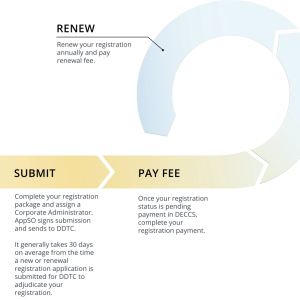Vision for Future VTOL Technologies stands as a pioneering force, consistently pushing the boundaries of innovation and redefining the future of warfare. Recently, DARPA unveiled groundbreaking concepts for Vertical Takeoff and Landing (VTOL) uncrewed systems, marking a significant leap forward in aerial capabilities. In this article, we delve into DARPA’s visionary concepts and their implications for the defense and aerospace industry.

Revolutionizing Aerial Operations
The concept of VTOL technology has long captivated the imagination of aerospace engineers and military strategists alike. Traditionally, aircraft have relied on runways or aircraft carriers for takeoff and landing, limiting their operational flexibility and deployment options. However, VTOL capabilities eliminate the need for conventional runways, enabling aircraft to ascend and descend vertically with unparalleled agility and precision.
DARPA’s Visionary Concepts
DARPA’s recent unveiling of concepts for future VTOL uncrewed systems represents a pivotal moment in the evolution of aerial warfare. These concepts encompass a diverse range of capabilities and applications, from surveillance and reconnaissance to logistics and strike missions. By leveraging advanced propulsion systems, cutting-edge materials, and autonomous technologies, DARPA aims to revolutionize the way military forces conduct operations in the air.
Next-Generation Propulsion Systems
At the heart of DARPA’s vision are next-generation propulsion systems that promise to redefine the performance envelope of VTOL aircraft. These propulsion systems leverage innovative technologies such as electric propulsion, vectored thrust, and hybrid powertrains to achieve unprecedented levels of efficiency, endurance, and maneuverability. By harnessing the power of electric propulsion, VTOL aircraft can operate quietly and stealthily, evading detection and surveillance.
Autonomous Capabilities
Central to DARPA’s vision for future VTOL uncrewed systems is the integration of autonomous capabilities that enable these aircraft to operate with minimal human intervention. Through advanced artificial intelligence (AI) algorithms, machine learning, and sensor fusion technologies, VTOL aircraft can navigate complex environments, adapt to dynamic threats, and execute mission objectives with precision and reliability. This autonomy not only enhances operational efficiency but also reduces the cognitive burden on human operators, enabling them to focus on higher-level decision-making tasks.
Multi-Mission Versatility
One of the key strengths of DARPA’s concepts for future VTOL uncrewed systems lies in their multi-mission versatility. These aircraft are designed to perform a wide range of missions across various domains, including intelligence, surveillance, reconnaissance (ISR), electronic warfare (EW), and close air support (CAS). By leveraging modular payloads, reconfigurable mission systems, and swarming tactics, VTOL aircraft can adapt to evolving mission requirements and provide critical support to ground forces in diverse operational environments.
Enhancing Operational Flexibility
By eliminating the need for conventional runways, VTOL technology enhances the operational flexibility of military forces, enabling them to deploy aircraft rapidly and operate in austere environments. This capability is particularly valuable in contested or denied airspace, where traditional aircraft may be vulnerable to enemy air defenses. With VTOL uncrewed systems, military commanders can project power with greater agility and responsiveness, gaining a decisive advantage over adversaries.
Challenges and Opportunities
While DARPA’s concepts for future VTOL uncrewed systems hold immense promise, they also present unique challenges and opportunities for the defense and aerospace industry. From technical hurdles such as power management and thermal management to regulatory considerations such as airspace integration and safety certification, the development and deployment of VTOL technology require concerted efforts and collaboration across industry, government, and academia. However, by overcoming these challenges, the defense and aerospace industry can unlock new frontiers of aerial warfare and shape the future of national security.
Conclusion
DARPA’s unveiling of concepts for future VTOL uncrewed systems heralds a new era of innovation and transformation in the defense and aerospace industry. With next-generation propulsion systems, autonomous capabilities, and multi-mission versatility, these aircraft promise to revolutionize the way military forces conduct operations in the air. By embracing the opportunities and addressing the challenges posed by VTOL technology, the defense and aerospace industry can chart a course toward a safer, more secure future.







